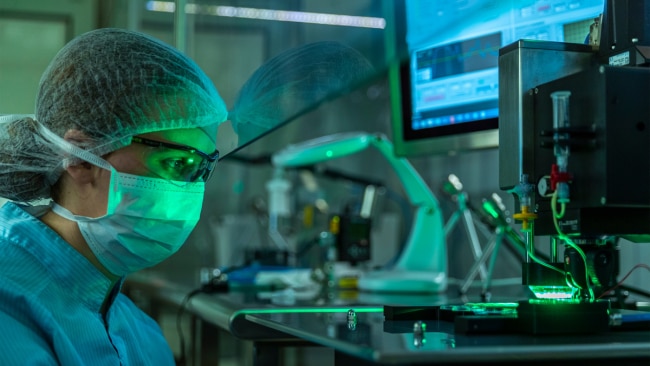Homemade helmet helps ease Max Burr’s Parkinson’s suffering
A bucket from Bunnings laced with LED bulbs is what a retired federal MP credits with improving his life with Parkinson’s.

A $3 bucket from Bunnings laced internally with lightbulbs is the object retired politician Max Burr credits with changing his life.
The 78-year-old former federal Liberal MP was diagnosed with Parkinson’s disease in 2012 and since then has gradually lost his sense of smell, his balance and his ability to write and play the piano.
It wasn’t until his discovery of photobiomodulation — better known as light therapy — in autumn 2015 that his condition began improving.
The disease — a combination of movement disorders, including tremors and impaired balance, as well as some associated neurological problems — is thought to affect about 70,000 people in Australia and accounts for 1700 deaths annually, with about 30 people diagnosed with it every day.
Treatment includes physical therapy and medication to increase the levels of dopamine in the brain.
The effectiveness of these drugs wears off over time, and now scientists and medical professionals are looking into the positive effect of light therapy on the adverse symptoms suffered by those with Parkinson’s.
By wearing his home-made LED-light therapy helmet for 20 minutes twice a day, Mr Burr tells today’s The Weekend Australian Magazine, he has regained his sense of smell and ability to write, improved his walking and significantly raised his quality of life.
“The benefits of the red light must be being transferred by a mechanism in the body — either by the vascular system or by the immune system,” Mr Burr said.
To date, there have been only nine studies conducted on the effects of photobiomodulation on humans with various neurological conditions including stroke, brain injury, Alzheimer’s disease and depression.
Simon Lewis, a consultant neurologist at the Royal Prince Alfred Hospital, said although the results had been positive, more studies were required before light therapy could be used as a legitimate treatment for Parkinson’s. “It’s encouraging research, and in the absence of a cure we shouldn’t disregard any suggestion, but we must strike a balance between hope and hype,” Professor Lewis said.
“The concern is that people might go out and buy a device which might be expensive, whereas in reality they may be better off spending money on proven therapies, such as exercise therapy or speech therapy, which are definitely going to help everybody with Parkinson’s.”




To join the conversation, please log in. Don't have an account? Register
Join the conversation, you are commenting as Logout